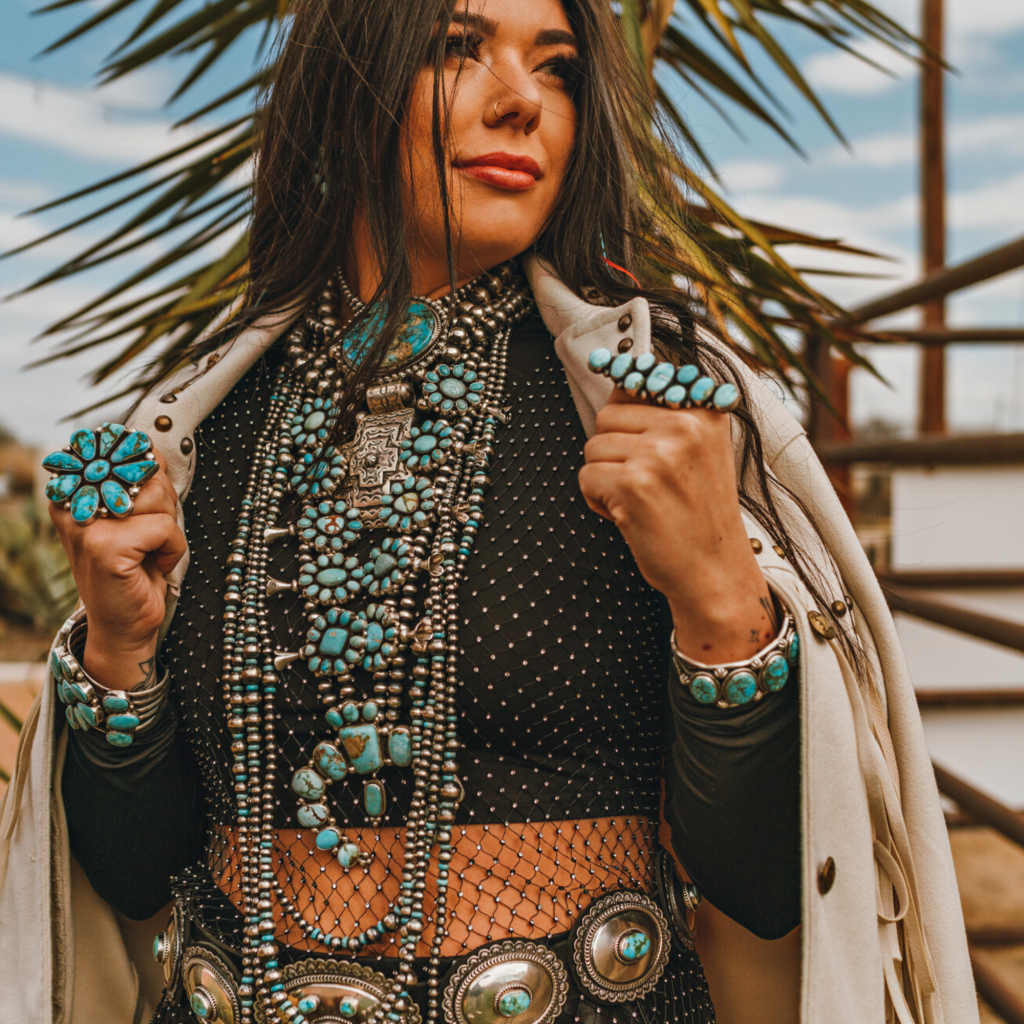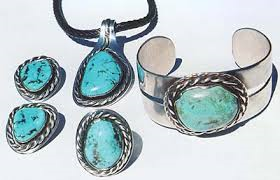Minerals, gems, stones, jewels, pearls. These beautiful, much revered decorative nuggets make great jewelry for boys and girls. Of recognizable minerals used in the making of both fine and costume jewelry, turquoise is one of the most popular.
Turquoise is an opaque, blue-to-green mineral that is a hydrous phosphate of copper and aluminum. It is rare and valuable in finer grades and has been prized as a gem and ornamental stone for thousands of years, owing to its unique hue. In recent times, turquoise has been devalued by the introduction of treatments, imitations and synthetics onto the market.
Fine or costume, real or fake, you must own a few pieces of turquoise jewelry, for goodness sake!
Turquoise Fun Fact: The word turquoise, which dates to the 17th century, is derived from the French turques for “Turks” because the mineral was first brought to Europe from Turkey, from the mines in historical Khorasan Province of Persia. Pliny the Elder referred to the mineral as callais and the Aztecs knew turquoise as chalchihuitl.
Turquoise is one of the dominant materials of Southwestern Native American jewelry. Thousands of pieces of turquoise were found in the Ancestral Pueblo sites at Chaco Canyon. Some turquoise mines date back to pre-Columbian times, and Ancestral Pueblo people traded the turquoise with Mesoamericans. Some turquoise found in southern Arizona dates back to 200 BCE.
Turquoise is closely associated with Navajo jewelry, but it was not until 1880 that the first turquoise was known to be set in silver. Turquoise and silver: a match made in jewelry heaven.
Turquoise Fun Fact: Turquoise was among the first gems to be mined, and while many historic sites have been depleted, some are still worked to this day. These are small-scale, often seasonal operations, owing to the limited scope and remoteness of the turquois deposits. Most mines are worked by hand, with little or no mechanization. However, turquoise is often recovered as a byproduct of large-scale copper mining operations, especially in the United States.
As a secondary mineral, turquoise forms by the action of percolating acidic aqueous solutions during the weathering and oxidation of pre-existing minerals, mainly copper and aluminum. Whether real or imitation, turquoise jewelry is immensely popular and visually appealing.
Turquoise: A gem so grand for the jewelry high demand.
Turquoise Fun Fact: Turquoise is insoluble in all but heated hydrochloric acid. Its streak is a pale bluish white and its fracture is conchoidal, leaving a waxy luster. Turquoise is soft compared to most other gems, yet turquoise takes a good polish. Turquoise may also be peppered with flecks of pyrite or interspersed with dark, spidery limonite veining.
Shiny, lustrous, easy on the eyes! Turquoise jewelry compliments garments like suits to ties!
The Southwest United States is a significant source of turquoise: Arizona, California, Colorado, New Mexico and Nevada are especially rich with turquoise. The turquoise deposits of California and New Mexico were mined by pre-Columbian Native Americans using stone tools, some local and some from as far away as central Mexico. Cerrillos, New Mexico is thought to be the location of the oldest mines. Prior to the 1920s, the state was the country’s largest producer of turquoise. Today, only one mine in Apache Canyon, California operates at a commercial capacity.
Turquoise: always marketable – always in demand! Let’s give a hand for this precious gem so grand!
The pretty pastel aqua shades of turquoise has endeared the nugget to many great cultures of antiquity: turquoise adorned the rulers of Ancient Egypt, the Aztecs, Persia, Mesopotamia, the Indus Valley, and ancient China since at least the Shang Dynasty. A common belief shared by many of these civilizations held that turquoise possessed certain prophylactic qualities; it was thought to change color with the wearer’s health and protect him or her from dark forces.
Turquoise jewelry wears well to any event: from sports, to entertainment venues, to weddings! Investing in tempting turquoise jewelry is money well-spent.
The potent, powerful, toying power of turquoise!

Nancy Mangano is an American fashion journalist, screenwriter and author of the Natalie North murder mystery book series. Visit Nancy on her global online fashion/style/beauty magazine Nancy Marie Mangano Style at https://nancymariemangano.com, her Facebook page Nancy Mangano at https://www.facebook.com/nancymmangano/ Twitter @https://twitter.com/nancymangano and her author website http://nancymangano.com












![turquoise-jewelry-nice_thumb[2]](https://passionforprying.files.wordpress.com/2015/06/turquoise-jewelry-nice_thumb2.jpg?w=239)













